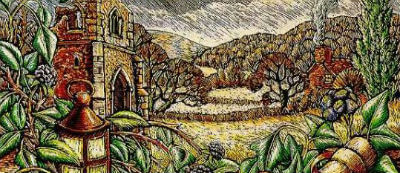A Time to Reconnect With our Ancestors – What is Samhain?

We've got the Pagans to thank for a lot of our festivals and traditions. Even a number of our Christian celebrations have roots in Paganism. Take Easter and Christmas, for example. The Yule log, the Christmas tree and celebrating in December are things that link Christmas to the winter solstice festival observed by pagans. Easter also has its roots in pagan celebrations as it was a celebration of the Spring equinox. Halloween is another modern day celebration that has its roots in ancient folklore.
How Halloween used to be celebrated
Every year at the end of October, all around the world there are people celebrating a day we now call Halloween. In ancient times it was known by a different name, but had much the same meaning. There are also many myths and legends associated with the celebration. We don't mean that people used to go around knocking on each others doors and asking for candy. We're referring to a day when we honor the dead and reconnect with out ancestors. When the leaves have fallen off the trees, the weather is turning grey and the earth is slowing down for the winter it's a time when Samhain was celebrated. It's also a time when the real world and the spirit world are very close together, making it the best time to connect with the dead.
Samhain is a sacred time for thousands of witches, druids, wiccans and other pagans as it is the festival of the Dead. Samhain, pronounced saah-win, means 'summer's end' so it's also a celebration of the end of the harvest and the beginning of the coldest part of the year. It's also considered by many to be the beginning of the spiritual new year.
Ways that Samhain is celebrated
The precise timing of the celebration does vary, although it is commonly observed on the 31st October. Similarly, the way it is celebrated also varies considerably. Some people celebrate the event as part of a group, while others perform their rituals alone. Rituals often include the creation of an altar table that is laid out with items that honor those that have passed before. For example, family photographs and heirlooms. It could also include a family tree, flags and postcards from a persons hometown. Blessings will often be said by family members and candles will be lit to honor the deceased.
Other rituals include tarot card readings and other divinations, reflections of the year that has passed, bonfires, visiting an ancestors grave, telling stories and preparing a Feast of the Dead. This special meal will require a place being set at the table which will belong to the deceased.
